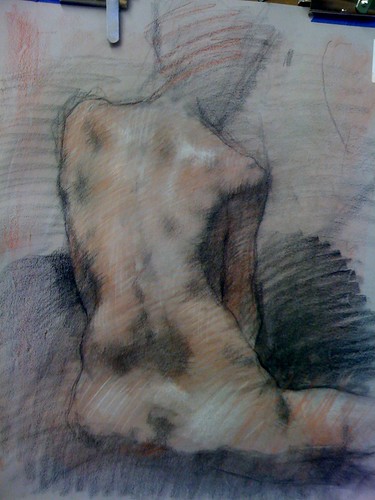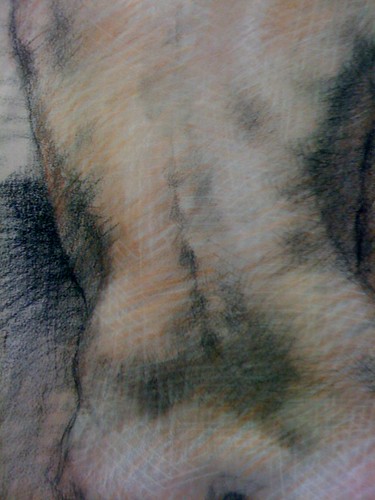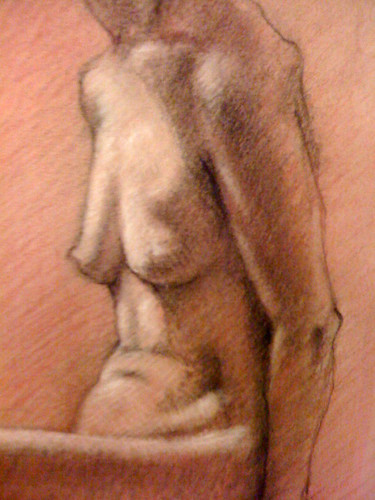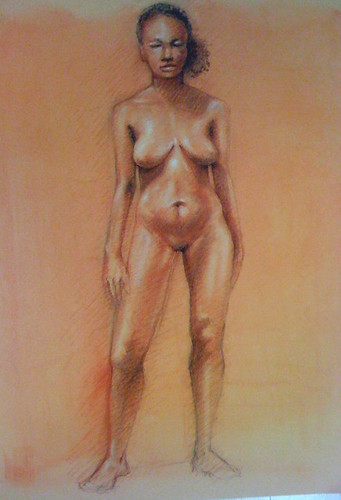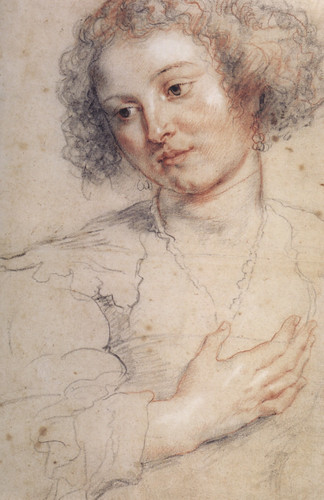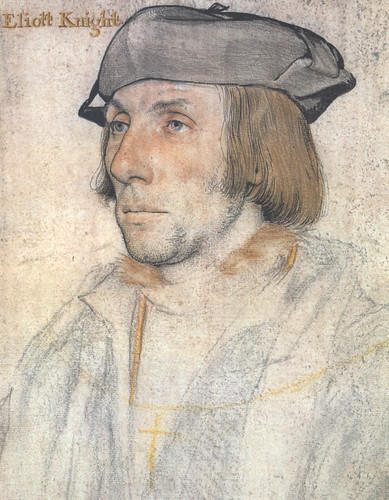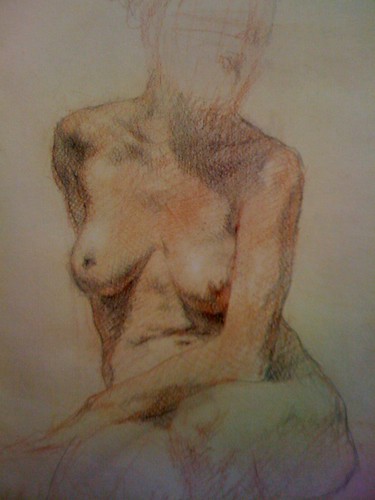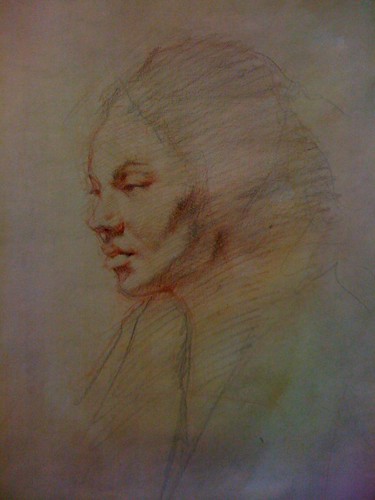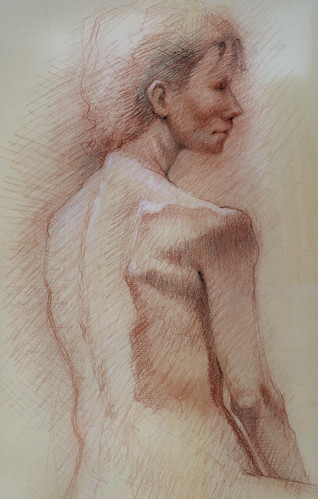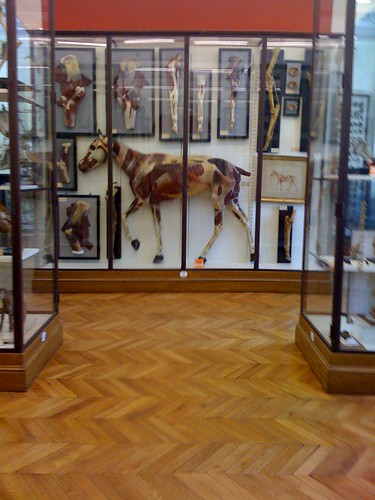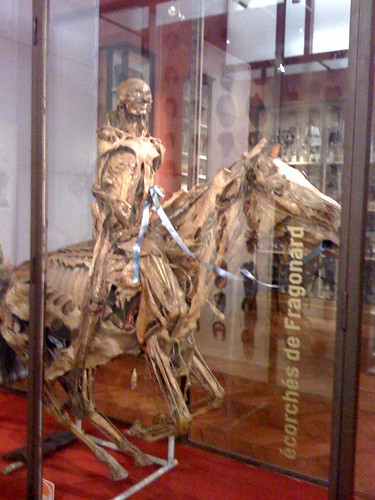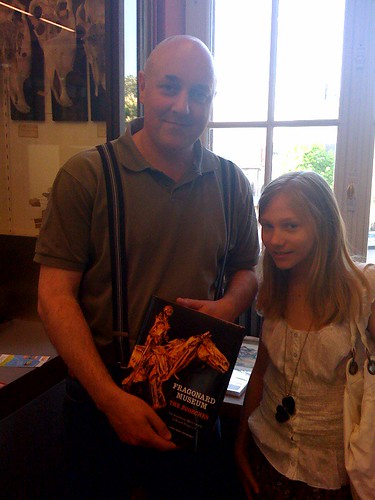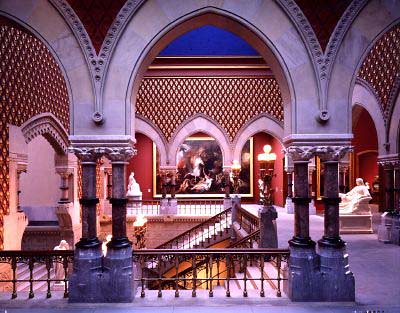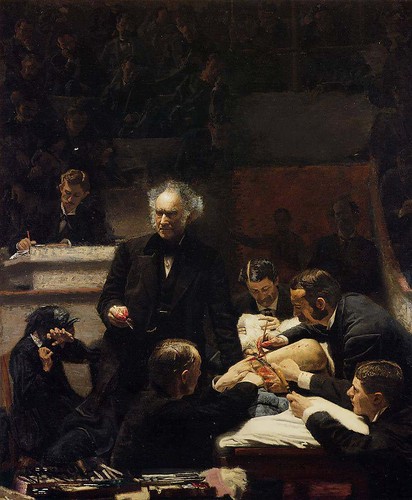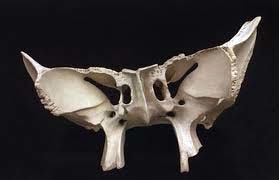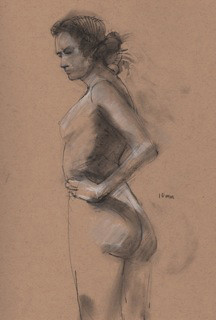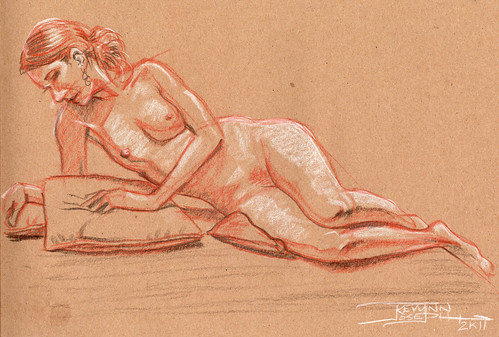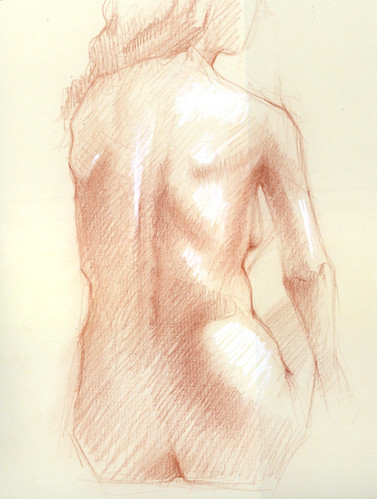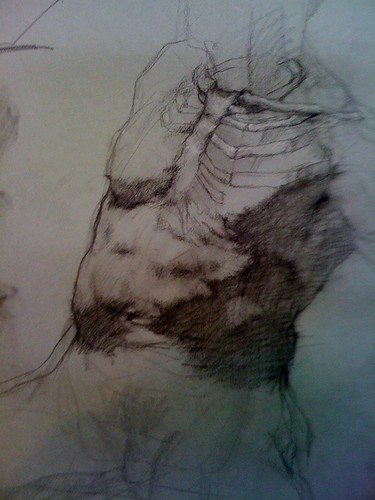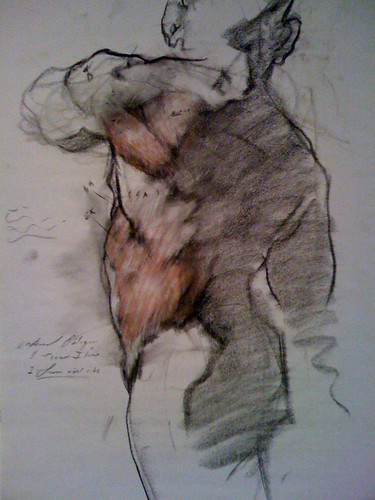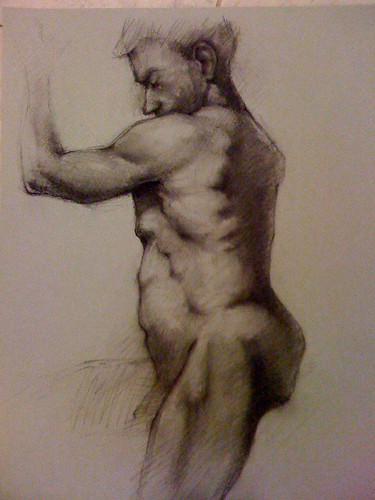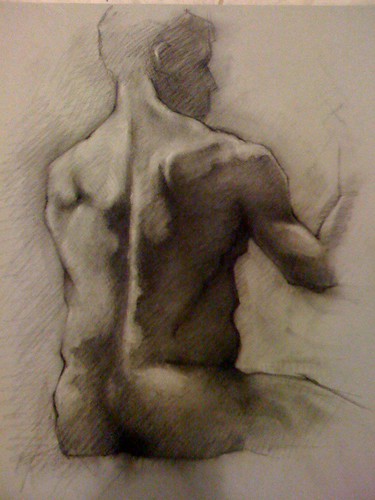This exhibition features the works of many talented french artists, but for me the main attraction was the drawings by romanticist Theordore Gericault. Gericault is perhaps best know for his masterpiece the "Raft of the Medusa" and the beautiful but, macabre studies he did for this painting, many of them featuring lifeless limbs and heads arranged as still life.
There are six drawings by Gericault in this exhibition. A very beautiful and especially moving one is called "The Artist's Left Hand". Gericault painted it while on his death bed.
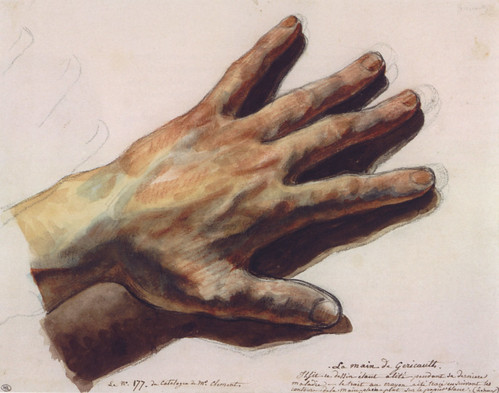
"The Artist's Left Hand" watercolor with black and red chalk, Theordore Gericault, 1824.
The following drawing by Gericault, "Scene of Combat" shows off his brilliant use of chiaroscuro and romanticist sensibility.
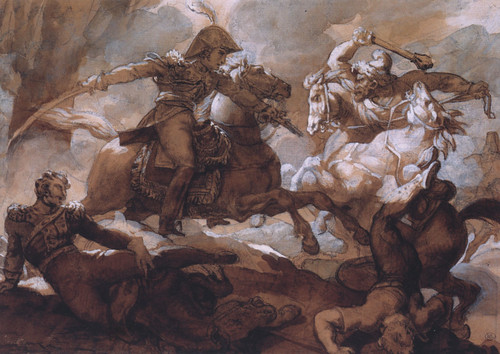
"Scene of Combat", black chalk and gray wash, heightened with gouache on brown paper, Theordore Gericault, 1818.
Gericault was interested in depicting all animals - their motion and expression. While he is known for his masterful drawings and paintings of horses, this sketchbook sheet depicting a cat is beautifully observed!
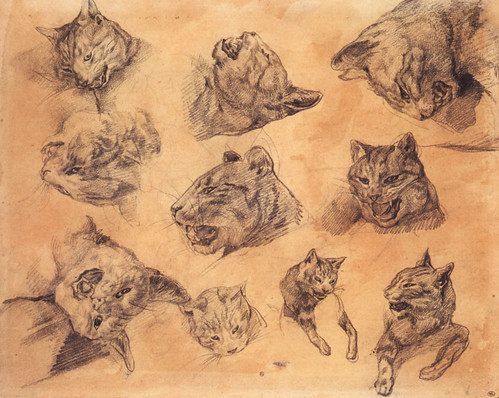
"Studies of Cats", black chalk, Theordore Gericault, 1818.
There are of course many amazing drawings in this exhibition. Some of those by Eugene Delacroix with their frentic line have an especially modern feeling.

"War on a Chariot Pulled by Two Horses", pen and brown ink, Eugene Delacroix, 1833.
There are several luminous classical figure studies by Pierre-Paul Prud'hon who was known for his black and white chalk drawings on toned paper.
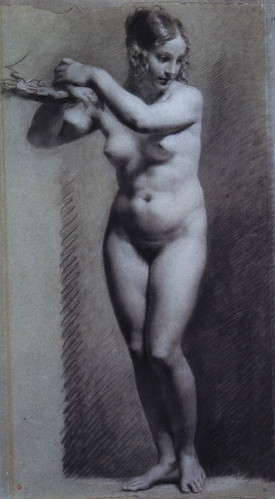
"Standing Female Nude Resting Her Arms on a Branch", black and white chalk on blue paper,Pierre-Paul Prud'hon.
The extraordinary draftsman Jean-Auguste Dominique Ingres is presented in the exhibition by this animated study for the painting "The Turkish Bath". The exhibition is worth seeing if only to enjoy the facile and sensitive way Ingres draws the hands.
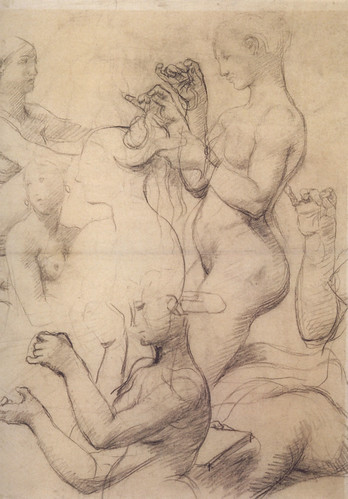
"Studies for the Turkish Bath", graphite on cream paper,Ingres.
I highly recommend this exhibition, I promise you won't be disappointed in this spectacular display of french drawings. I also recommend the exhibition catalog, "David, Dealcroix and Revolutionary France" by Louis-Antoine Prat and Jennifer Tonkovich.
